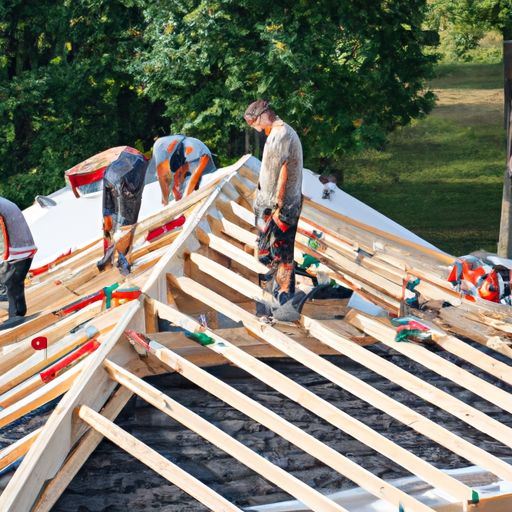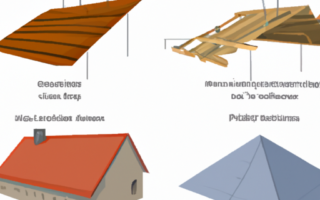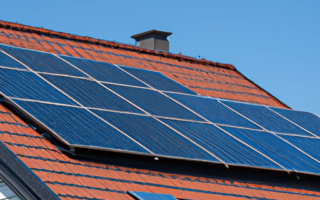Basics of Roof Construction: A Step-by-Step Guide to Building a Solid and Secure Roof
Building a solid and secure roof is essential for the structural integrity and longevity of any building. Whether you are constructing a new home or replacing an old roof, understanding the basics of roof construction is crucial.
The first step in building a roof is to frame the structure. This involves creating the framework that will support the weight of the roof, as well as any additional loads such as snow or wind. The most common type of roof framing is a truss system, which consists of triangular-shaped trusses that span the width of the building.
Once the roof framing is in place, the next step is to install the roof deck. The roof deck is the base layer of the roof and serves as a solid foundation for the other roofing materials. It is typically made of plywood or oriented strand board (OSB) and is secured to the roof framing with nails or screws.
After the roof deck is installed, it is time to install the underlayment. The underlayment is a waterproof barrier that is placed over the roof deck to protect it from moisture. The most common type of underlayment is asphalt-saturated felt, although synthetic materials such as synthetic underlayment are becoming more popular.
Once the underlayment is in place, it is time to install the roofing material. There are various types of roofing materials available, including asphalt shingles, metal roofing, and clay tiles. The choice of roofing material will depend on factors such as the climate, aesthetics, and budget.
In addition to the roofing material, other components such as flashing, vents, and gutters are also installed to ensure the roof is watertight and properly ventilated. Flashing is used to seal joints and prevent water from entering the roof, while vents are installed to allow for air circulation in the attic. Gutters, on the other hand, are installed to collect and divert rainwater away from the foundation of the building.
It is important to note that building codes and regulations may vary depending on your location, so it is essential to consult with local authorities and professionals before starting any roof construction project. Hiring a licensed and experienced roofing contractor is highly recommended to ensure the roof is built to code and to avoid potential issues down the line.
In conclusion, understanding the basics of roof construction is crucial for building a solid and secure roof. From framing and decking to underlayment and roofing materials, every step plays a vital role in creating a roof that will withstand the test of time. By following proper construction techniques and consulting with professionals, you can ensure that your roof will not only protect your building but also enhance its overall aesthetic appeal.
Essential Materials and Practices for Roof Construction: Ensuring Durability and Safety
When it comes to roof construction, using the right materials and following the essential practices is crucial to ensure durability and safety. A solid and secure roof not only protects the building from various elements but also adds value to the property. In this comprehensive guide, we will discuss the essential materials and practices necessary for building a roof that will stand the test of time.
The first and foremost material that plays a critical role in roof construction is the roofing shingles. These are the outermost layer of the roof and provide protection against weather conditions such as rain, snow, and UV rays. Common types of roofing shingles include asphalt, metal, wood, and slate. Each type has its own unique features and advantages, so it is important to choose the one that suits your specific needs and local climate.
Another essential material in roof construction is the underlayment. This acts as a secondary barrier against water and helps to prevent leaks. Commonly used underlayment materials include felt paper, synthetic materials like fiberglass, and self-adhering membranes. The choice of underlayment material depends on factors such as the slope of the roof and the type of roofing shingles being used.
In addition to the roofing shingles and underlayment, proper insulation is crucial for energy efficiency and comfort. Insulation materials such as fiberglass, cellulose, and foam boards help to regulate the temperature inside the building and reduce heat loss or gain. Good insulation also helps to prevent ice dams and minimize the risk of roof damage during extreme weather conditions.
Ventilation is another key factor in roof construction, as it helps to remove excess heat and moisture from the attic space. This is important to prevent the growth of mold and the rotting of the roof deck. Proper ventilation can be achieved through the use of ridge vents, soffit vents, and exhaust fans.
Lastly, following the essential practices during the roof construction process is crucial for ensuring durability and safety. This includes proper installation techniques, ensuring proper flashing around chimneys and vents, and regular maintenance such as cleaning the gutters and inspecting the roof for any damage.
In conclusion, by using the right materials and following essential practices, you can build a solid and secure roof that will withstand the test of time. The choice of roofing shingles, underlayment, insulation, and ventilation plays a crucial role in ensuring durability and safety. Additionally, following proper installation techniques and regular maintenance are key to the longevity of the roof. By taking these factors into consideration, you can create a roof that not only protects your property but also adds value to it.
Image Description:
When it comes to roof construction, one often overlooked aspect is the importance of image description. An image description is a text alternative that describes the content and function of an image on a webpage. It plays a crucial role in making websites accessible to individuals with visual impairments or those who rely on assistive technologies.
An image description typically includes a concise and accurate explanation of what the image depicts and any relevant details that may not be apparent solely by looking at it. For example, if the image shows a pitched roof with shingles, the description may mention the type and color of the shingles, providing a vivid mental image for those who cannot see the picture.
Optimizing image descriptions with relevant keywords is essential for both accessibility and search engine optimization (SEO) purposes. Search engines rely on text-based information to understand the content of a webpage, and well-crafted image descriptions can improve the visibility of your website in search results.
When creating image descriptions for roof construction articles, it is crucial to consider the specific details that would be valuable to both visually impaired individuals and those searching for related information. Include keywords such as „roof construction,” „building a roof,” „roofing materials,” and specific terms related to the image, like „pitched roof” or „asphalt shingles.”
Remember to keep the image description concise, focusing on the most important aspects of the image while incorporating relevant keywords naturally. Avoid keyword stuffing, which may harm your website’s SEO and readability. Additionally, take care to provide accurate and useful information to ensure that visually impaired users are able to fully grasp the content of the image.
In conclusion, image description is a crucial aspect of roof construction articles, contributing to both accessibility and search engine optimization. By crafting concise and keyword-optimized descriptions, you can enhance the accessibility of your content while improving its visibility in search engine results.



